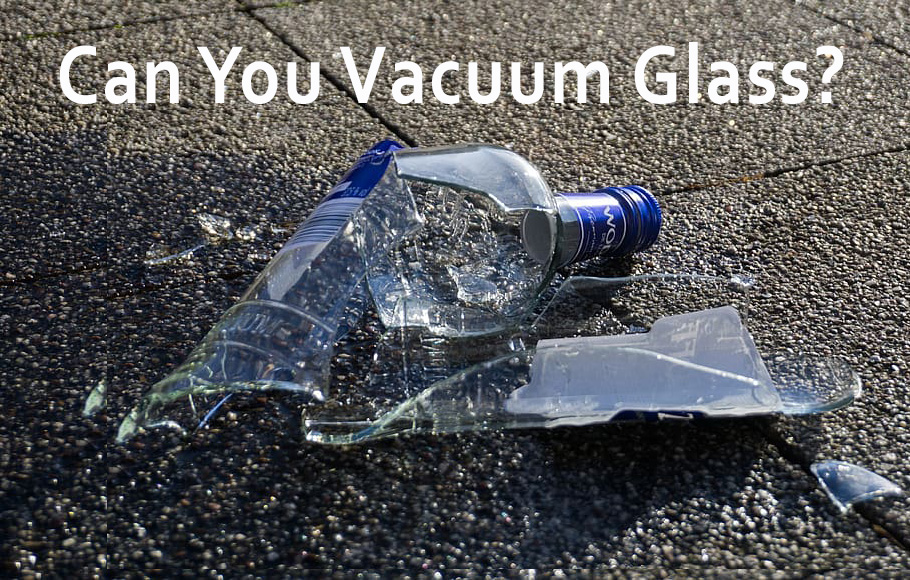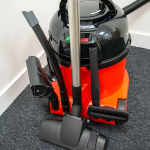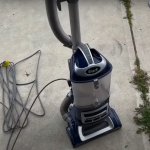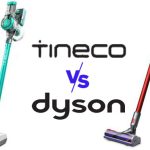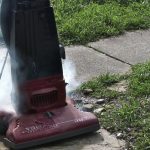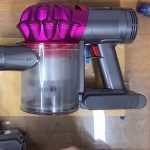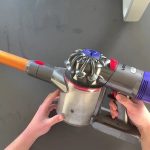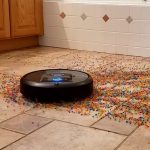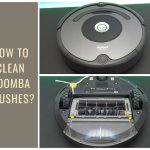Dealing with shattered glass can be terrifying. One question that often arises in such situations is, “Can you vacuum glass?” The answer isn’t a simple yes or no—it depends on the type and size of glass pieces, the vacuum cleaner you’re using, and the precautions you take.
In this article, we’ll examine the challenges of vacuuming glass while talking about the perspectives of various manufacturers, safety precautions, potential hazards, and alternate cleansing techniques.
Ensuring Safety First: Can Glass Be Safely Vacuumed?
When faced with shattered glass, the instinct to use a vacuum cleaner is common. However, the safety aspect cannot be overlooked. Can glass be safely vacuumed? It is not an easy question.
Due to the possibility of cuts, injuries, and hoover damage, safety is crucial. The solution varies based on factors such as the size of the glass, the type of vacuum cleaner used, and the safety precautions taken. Larger glass fragments have the potential to harm hoover internals, thus caution is important.
Considering alternatives is wise too. Manual methods and damp clothes can be effective. Balancing convenience with safety is key. The objective is to deal with glass cleanup while reducing potential damage.
Insights From Vacuum Manufacturers:

When it comes to vacuuming glass, a consensus develops among different manufacturers, each of whom highlights the potential risks and offers helpful advice to consumers. Consider what some well-known vacuuming brand names have to say in more detail:
Dyson:
Dyson, a pioneer in innovative vacuum technology, strongly advises against vacuuming glass. The risk of damage to both the vacuum unit and the user is a primary concern. Fragile glass particles can lead to clogs, affect suction power, and even cause harm if not handled properly.
Tineco:
Tineco, known for its modern and convenient vacuum designs, also cautions users against vacuuming glass. The sensitive nature of glass might cause filter damage and other potential mechanical problems that shorten the vacuum’s lifespan and performance.
Shark:
Shark, recognized for its versatile vacuum solutions, joins the consensus against vacuuming glass. Their experts draw attention to the risk that glass fragments could cause internal vacuum component damage, resulting in decreased performance and potential maintenance expenditures.
Bissell:
Bissell, a longstanding name in home cleaning equipment, echoes the sentiments of other manufacturers. Vacuuming glass can result in damage to the vacuum’s intricate parts and pose a risk to the user’s safety, emphasizing the importance of alternative glass cleanup methods.
VacLife:
VacLife, a brand focused on portable vacuum solutions, aligns with its counterparts in discouraging the vacuuming of glass. They emphasize that avoiding glass debris in the vacuum helps maintain its durability and suction power, ensuring a longer service life.
Eureka:
Eureka, known for its practical vacuum designs, shares similar advice. Vacuuming glass can lead to issues such as clogs and damage to internal mechanisms, impacting the vacuum’s effectiveness in the long run.
iRobot:
Even in the realm of robotic vacuums, represented by iRobot, the caution against vacuuming glass remains consistent. The risk of potential damage to the vacuum’s delicate sensors and mechanisms is emphasized, reinforcing the need to avoid glass debris.
DeWalt:
DeWalt, a reputable name in industrial-grade equipment, stresses the importance of not vacuuming glass. Their guidance is rooted in preventing damage to the vacuum itself and maintaining its functionality for heavy-duty applications.
Miele:
Miele, known for its high-quality appliances, concurs with the shared industry perspective. They advise users against vacuuming glass to safeguard the vacuum’s intricate components and ensure it continues to deliver effective cleaning results.
Dreame:
Dreame, a brand focusing on innovative cleaning technology, aligns with its peers in advising against vacuuming glass. Their insights highlight the potential impact of glass fragments on the vacuum’s performance and structural integrity.
Collectively, these insights from various vacuum manufacturers serve as a resounding reminder that vacuuming glass is not recommended due to the potential risks involved.

Glass Dangers and Vacuum Cleaners:
Before reaching for your vacuum cleaner, it’s important to understand that glass, especially large pieces and shards, can potentially damage the internal components of your device.
When it comes to the interaction between glass and vacuum cleaners, several potential hazards arise across different vacuum models. Understanding and resolving these glass-related dangers is crucial for maintaining the longevity and effectiveness of your vacuum, whether it is an older model, a newer one, or even an advanced industrial-grade equipment.
Old Vacuum Models
In the era of older vacuum models, equipped with disposable bags for debris collection, the fragility of glass introduces a range of potential issues:
- Bag Breakage: Glass fragments have the capacity to slice through vacuum bags, leading to untimely bag breakage and mess.
- Internal Obstructions: Glass can become lodged in critical components like the fan, resulting in motor malfunctions or even seizure.
New Vacuum Models:
While modern vacuums models offer advancements, glass-related challenges persist:
- Canister Vulnerability: Despite enhanced durability, the force of suction can still crack vacuum canisters when dealing with tiny pieces of glass.
- Air Filter Compromises: Glass particles trapped in air filters can compromise filtration efficiency and air quality by cutting through filters.
Advanced Industrial Vacuum Models:
Industrial vacuums, such as shop vacs, are better equipped but not impervious to glass risks:
- Lowered Probability: Industrial models present a reduced risk of glass damage due to reinforced vacuums hose and specialized filters.
- Optimized Design: Manufacturers take extra measures to prevent glass-related damage, yet residual risks remain.
Safe and Effective Glass Cleanup With a Vacuum: How To
Vacuuming glass shards can be a viable option when dealing with smaller pieces, but it must be done with care.
Here’s a step-by-step guide to safely clean up broken glass pieces using a vacuum:
Use Suitable Equipment:
Opt for a vacuum cleaner equipped to handle fine particles and debris. If you have a Dyson vacuum or a similar model, it might have specialized attachments designed for this purpose.
Consider a Vacuum Bag:
If your vacuum allows, use a vacuum bag designed for fine particles. This may aid in preventing glass shards from damaging sensitive components.
Proceed With Caution:
When vacuuming glass fragments, use slow and controlled motions. Avoid aggressive movements that could force glass pieces into the vacuum’s mechanisms.
Post-Cleanup Inspection:
After vacuuming, carefully inspect the vacuum cleaner’s attachments, hose, and nozzle. Thoroughly clean these parts to ensure no glass residue remains, reducing the risk of clogs.
Exploring Alternatives: Other Methods for Handling Glass Shards
If you’re hesitant to vacuum glass shards, there are alternative methods to consider:

Manual Cleanup:
For larger glass pieces, opt for manual methods using a broom, brush, and dustpan. This approach minimizes the risk of damaging your vacuum and prevents glass from entering it.
Damp Cloth or Paper Towel:
For fine glass particles, use a damp cloth or paper towel to gently pick up the fragments. Dampening the cloth can help prevent glass from scattering.
Tape Method:
Employ wide tape, such as duct tape, to press down on glass shards and lift them from surfaces. This method is efficient for small pieces that are difficult to handle.
Conclusion
In conclusion, the question of whether you can vacuum glass depends on several factors. Prioritize safety by considering the size of the glass fragments and the capabilities of your vacuum cleaner. For larger pieces, opt for manual methods or alternative cleanup approaches to avoid damaging your equipment.
Remember to wear thick gloves and exercise caution throughout the cleanup process. By using these safety measures, you may effectively deal with trash, shattered glass, and small shards without endangering your safety or the vacuum cleaner’s integrity.

